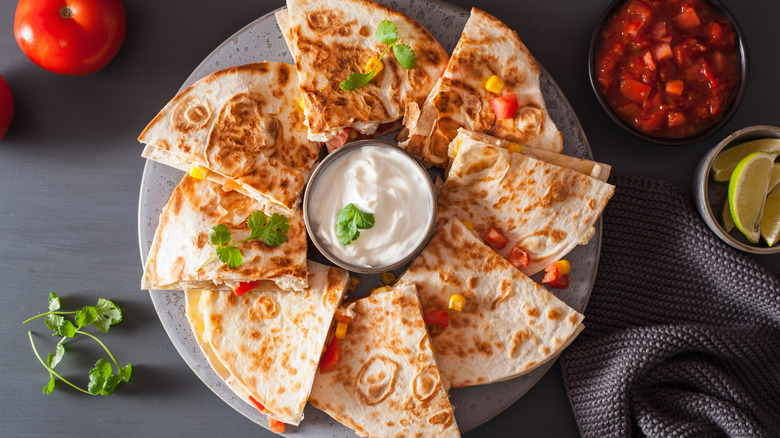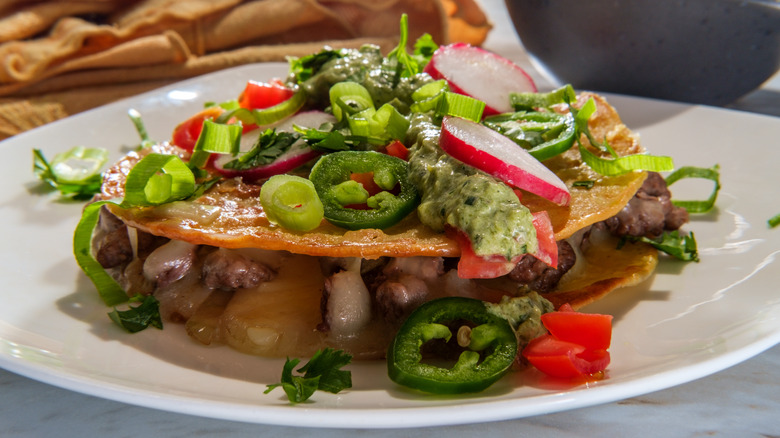The Simple Additions That Turn Quesadillas Into Mulitas
Although quesadillas originated in Mexico, they have become extremely popular in the U.S., so much so that you don't have to go to a Mexican restaurant to get one. You can often find them on the appetizer menu at sports bars and fast-casual chains like Applebee's. In fact, according to YouGovAmerica, quesadillas are the fifth most popular Mexican food in America.
When you order a quesadilla in the U.S., you expect it to come loaded with cheese, but you may be surprised to learn that in Mexico, the gooey dairy product isn't always included, notes The Cheese Professor. Authentic quesadillas took advantage of leftovers, like chicken, beans, or even rice, folded into a large tortilla. Cheese was expensive in the late 1800s and early 1900s in Mexico, so not every family added queso to the signature dish.
If you're a fan of quesadillas, wait until you hear about mulitas. Mulitas take quesadillas up a notch, and they're very popular in Los Angeles. Residents can buy them from taco trucks, food stands, taco carts, and Mexican restaurants across the region, notes Eater Los Angeles. Like quesadillas, they are generally served flat and contain a wide range of ingredients, depending on each individual's tastes. The main difference between quesadillas and mulitas? One key ingredient is added between the tortilla layers.
Mulitas are meatier
Mulitas contain heaping piles of chicken, beef, or steak mixed with veggies layered between two corn tortillas, notes Izzy Cooking. The meat filling is the star of the show in mulitas, while in quesadillas it usually plays a supporting role or is added in an equal proportion to the other toppings. They have a thin layer of cheese, but it's there to complement rather than engulf the meat.
Much like how Americans love hamburgers, mulita aficionados can get crazy with their creations, such as this stacked mulita from Ave26 Tacos in LA. As you can see, a mulita can be piled high with toppings, including peppers, guacamole, pico de gallo, and salsa. Whereas quesadillas are often made as a finger food, you'll need a fork and knife to eat a multi-stacked mulita.
Since mulitas are made with corn tortillas, they are often crispier than quesadillas, which are often made with soft flour ones. So the next time you're craving a quesadilla but want something a bit heartier, give mulitas a try.

